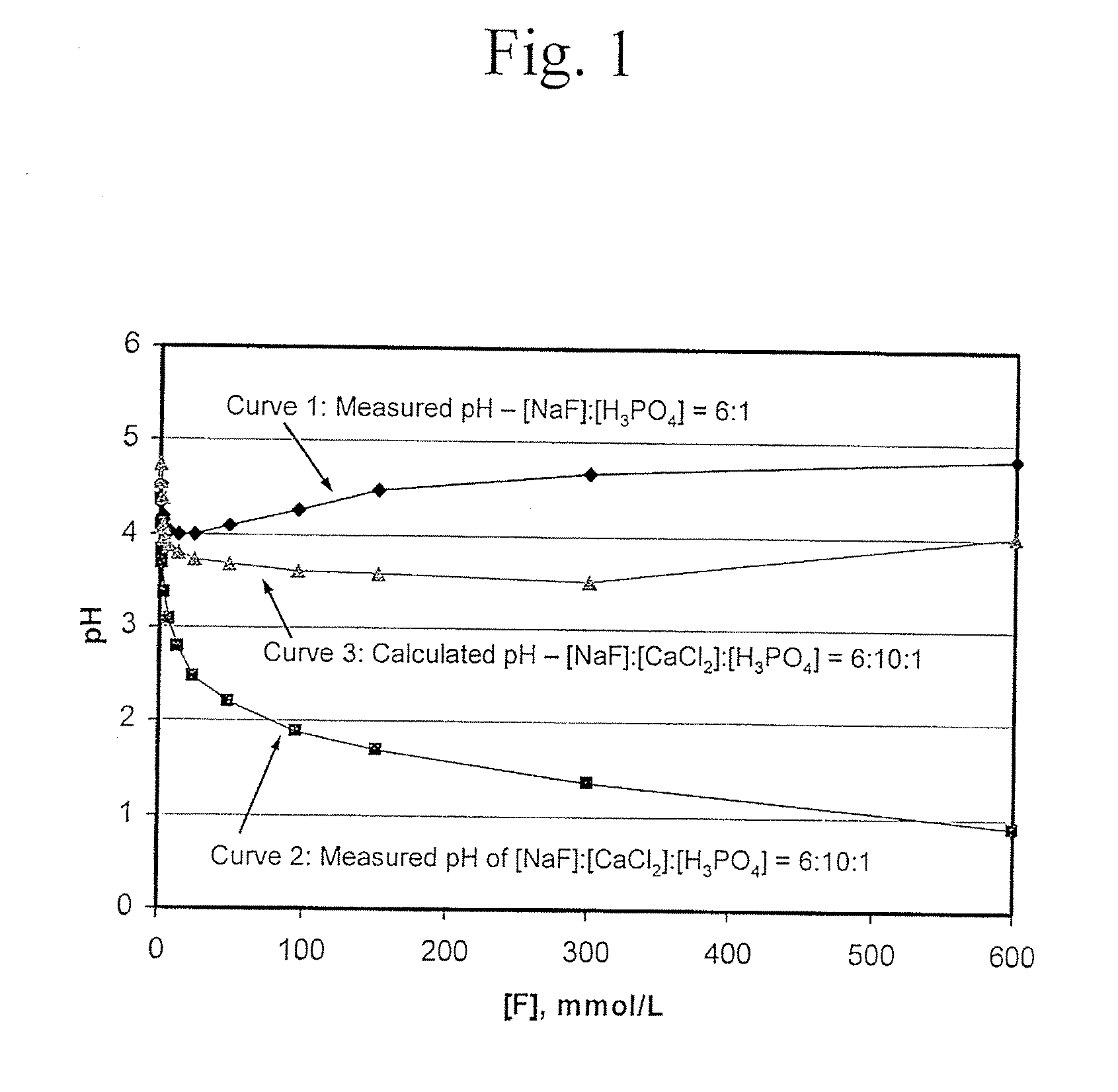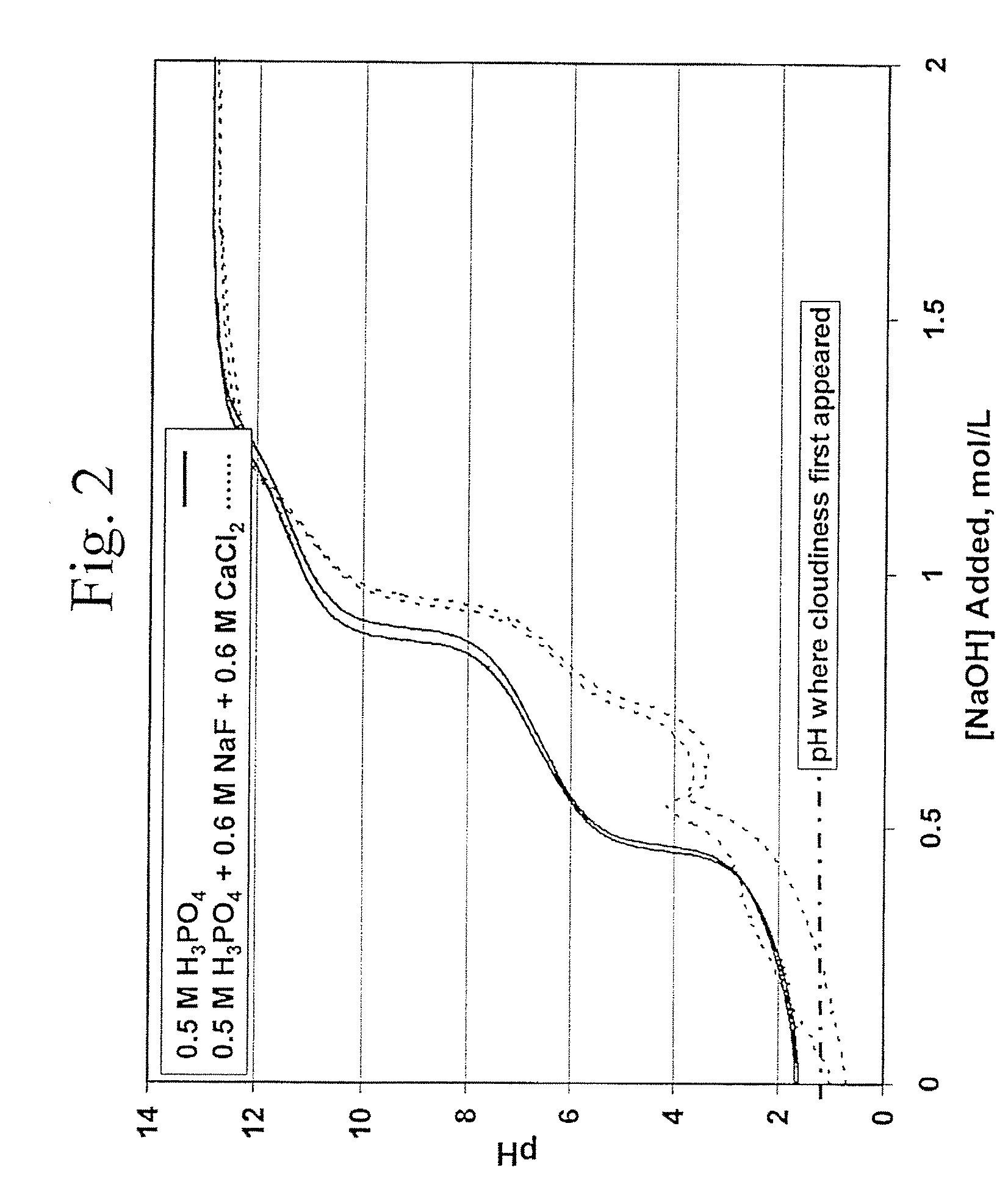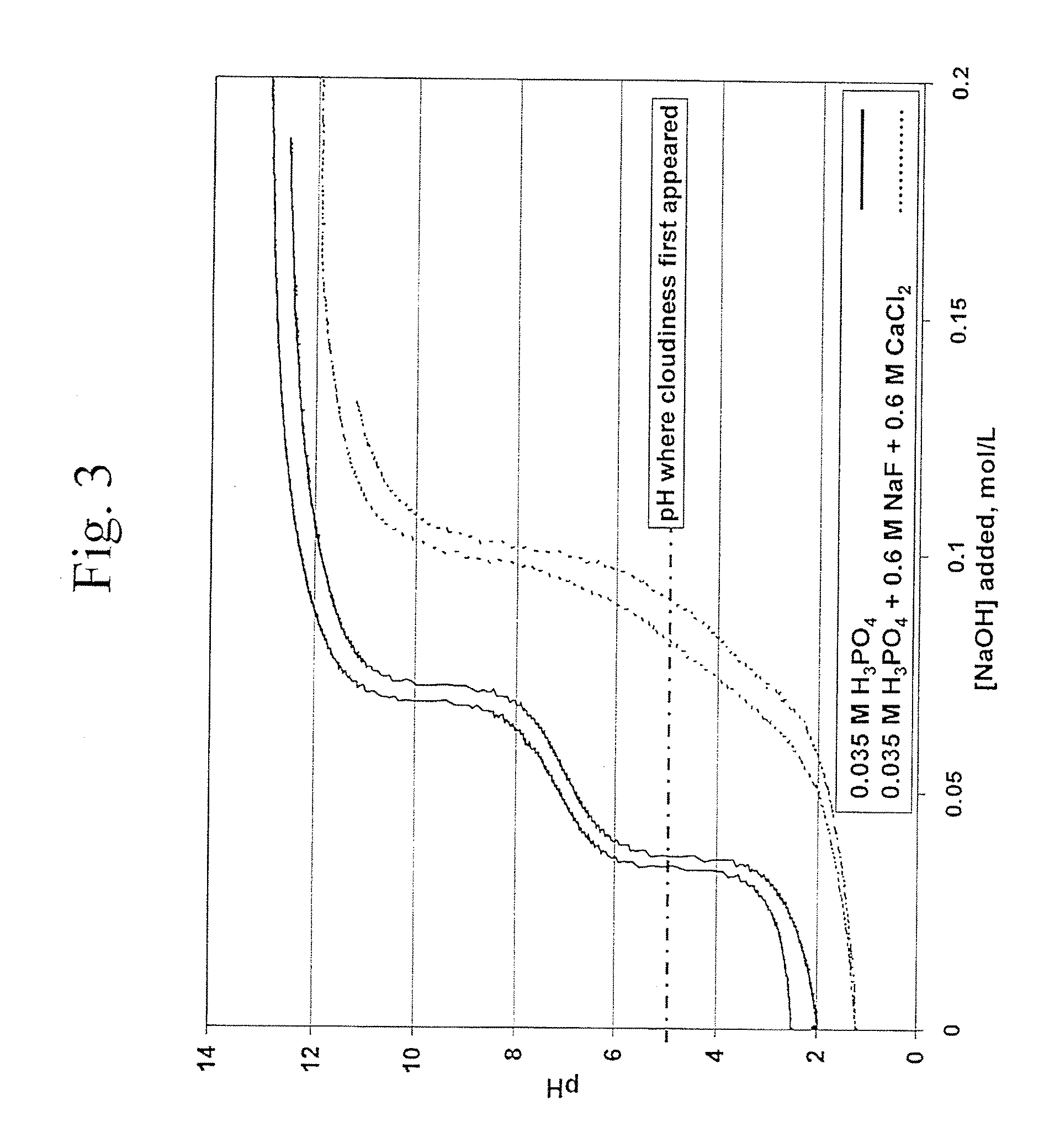Fluoride-Calcium Compositions, Dental Products, and Methods for Providing Dental Fluoride
a technology of fluoride and calcium, applied in the field of dental caries prevention, can solve the problems of calcium fluoride precipitation, and achieve the effect of relatively large amount of fluoride in a composition and calcium fluoride deposition
- Summary
- Abstract
- Description
- Claims
- Application Information
AI Technical Summary
Benefits of technology
Problems solved by technology
Method used
Image
Examples
example 1
In Vitro Analysis
[0040] The ability of the F—Ca—P mixtures to deposit fluoride into oral substrates was evaluated in vitro with the use of filter discs as the model substrates, as described in Takagi S. et al., “Effect of a Low-Fluoride-Content, Two-Component Rinse on Fluoride Uptake and on De- and Remineralization of Enamel Lesions: An In Vitro Study,”Caries Res. 35:223-228 (2001). Hydrophilic membrane filter discs with an averaged pore size of 0.2 μm and a relatively constant thickness (150 μm) and pore volume (75%) were provided. For each of the mixtures specified in the following Table, the discs were immersed in the mixture for 1 minute and rinsed for 20 seconds with a CaF2 saturated solution to remove F that was not firmly attached to the disc. Each disc was then immersed in a 0.5 M HClO4 etchant solution for 30 minutes to dissolve the deposited F. The etchant then was neutralized and analyzed for F.
[0041] As shown in Table 3, for a given F content, the F deposition by the F...
example 2
In Vivo Salivary Fluoride Analysis
[0042] Two human subjects refrained from eating or drinking for 2 hours. Each subject then rinsed for 1 minute with a slurry prepared by mixing 5 grams of a commercial 5000 ppm F dentifrice (NaF as source of F) or the experimental 5000 ppm F (F—Ca—P mixture as source of F) dentifrice with 15 grams of distilled water. The [F][Ca][P] molar ratio in the dentifrice of the invention was 6:10:1. After spitting out the dentifrice slurry the subject rinsed for 10 seconds with 20 mL of distilled water. The subjects continued to refrain from food and drink for 1 hour after dentifrice application, whereupon approximately 2 mL of saliva was collected. One mL of each saliva sample was added to 1 mL of 0.5 M perchloric acid and allowed to stand for about 5 minutes. Two mL of TISAB (Total Ionic Strength Adjustment Buffer) that also contained 0.25 M NaOH was then added, and the sample was analyzed for F content. As shown in Table 4, a much higher 1-hour salivary F...
example 3
Second In Vivo Salivary Fluoride Analysis
[0043] Two subjects refrained from eating or drinking for 2 hours. Each subject then rinsed for 1 minute with 20 mL of a 228 ppm F NaF rinse or a 228 ppm F F—Ca—P rinse having a [F]:[Ca]:[P] molar ratio of 6:10:1. No water rinse was given after the F rinse. No food or drink was allowed following the treatment until approximately 2 mL of saliva was collected at 1 hour after the rinse application. One mL of saliva sample was added to 1 mL of 0.5 M perchloric acid and allowed to stand for about 5 minutes. Two mL of TISAB that also contained 0.25 M NaOH was then added and the sample was analyzed for F content. The results given in Table 5 showed a greatly increased 1-hour salivary F for the F—Ca—P treated subject.
TABLE 5Fluoride deposition with mouth rinse.Salivary F% improvementTest Productconcentration, mMby F—Ca—PNaF rinse (228 ppm F)0.081 ± 0.0212901%F—Ca—P rinse (228 ppm F)2.35 ± 0.76
Values are mean ± s.d. (n = 2)
PUM
 Login to View More
Login to View More Abstract
Description
Claims
Application Information
 Login to View More
Login to View More - R&D
- Intellectual Property
- Life Sciences
- Materials
- Tech Scout
- Unparalleled Data Quality
- Higher Quality Content
- 60% Fewer Hallucinations
Browse by: Latest US Patents, China's latest patents, Technical Efficacy Thesaurus, Application Domain, Technology Topic, Popular Technical Reports.
© 2025 PatSnap. All rights reserved.Legal|Privacy policy|Modern Slavery Act Transparency Statement|Sitemap|About US| Contact US: help@patsnap.com



